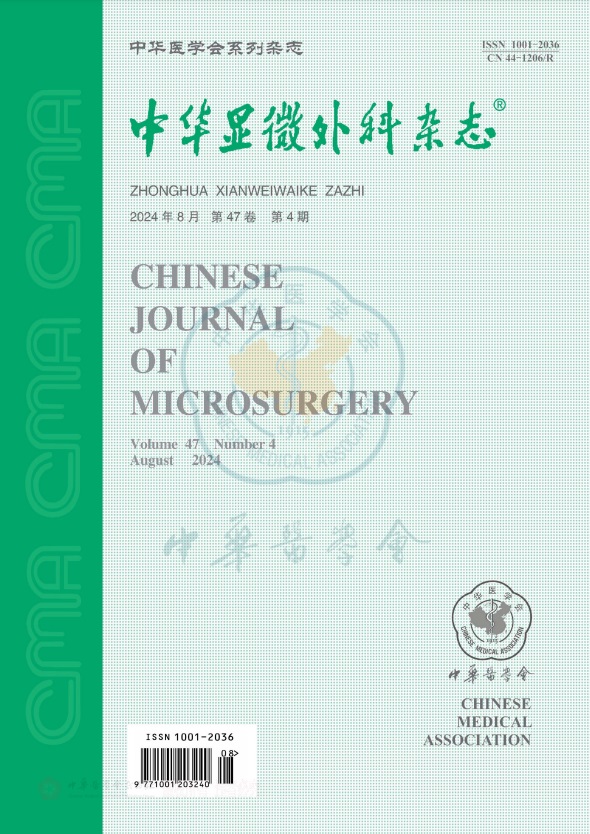An anatomic study of superficial temporal artery to anterior cerebral artery bypass using ipsilateral parietal branch of superficial temporal artery as graft
引用次数: 0
Abstract
Objective Revascularization of the distal segment of the anterior cerebral artery (ACA) using extracranial donors requires long interposition grafts. A novel bypass procedure which uses the two main branches of the superficial temporal artery (STA) to reach the A3 segment of the anterior cerebral artery with a single skin incision was designed. Methods Ten cadaveric specimens were dissected through a single skin incision to harvest the frontal and parietal branches of the STA from June, 2017 to September, 2017. An anterior interhemispheric approach provided access to the middle internal frontal artery (MIFA). The parietal STA was used as an interposition graft between the frontal STA and MIFA. Lengths and calibers of the distal branches of STA and MIFA were measured at the anastomotic sites. All data was statistical analysis by t-test. Results The average caliber of MIFA was (1.4±0.2) mm, which matched the caliber of both frontal and parietal branches of STA. The mean distance for an end-to-side bypass from STA to MIFA was (144.5±7.4) mm and the average harvested donor-graft complex length was (203.1±27.9) mm. This bypass construct provided around 140% donor graft length. Conclusion Using the parietal branch of the STA as an interposition graft enabled a successful tension-free STA-MIFA bypass. The advantages of this technique over existing approaches include sufficient graft length, caliber match and relative technical ease. Key words: Anterior cerebral artery (ACA); Extracranial-intracranial bypass; Superficial temporal artery; Interhemispheric approach; Cerebral revascularization; Microsurgical anatomy颞浅动脉同侧顶叶支移植颞浅动脉至大脑前动脉搭桥术的解剖学研究
目的应用颅外供体对大脑前动脉(ACA)远端段进行血运重建需要较长的介入移植物。设计了一种新的旁路手术,利用颞浅动脉(STA)的两个主要分支,通过单一的皮肤切口到达大脑前动脉A3段。方法从2017年6月至2017年9月,通过单切口解剖10具尸体标本,获取STA的额、顶叶分支。前半球间入路提供了进入额中内动脉(MIFA)的途径。顶叶STA被用作额STA和MIFA之间的介入移植物。在吻合部位测量STA和MIFA远端分支的长度和口径。所有数据均采用t检验进行统计学分析。结果MIFA的平均口径为(1.4±0.2)mm,与STA额、顶叶支的口径一致。从STA到MIFA的端侧旁路的平均距离为(144.5±7.4)mm,收获的供体-移植物复合体的平均长度为(203.1±27.9)mm。这种旁路结构提供了约140%的供体-移植长度。结论利用STA的顶叶支作为介入移植物,成功地实现了STA-MIFA无张力搭桥术。与现有方法相比,该技术的优点包括足够的移植物长度、口径匹配和相对的技术简易性。关键词:大脑前动脉;颅外-颅内分流术;颞浅动脉;半球间方法;脑血运重建;显微外科解剖学
本文章由计算机程序翻译,如有差异,请以英文原文为准。
求助全文
约1分钟内获得全文
求助全文
来源期刊
CiteScore
0.50
自引率
0.00%
发文量
6448
期刊介绍:
Chinese Journal of Microsurgery was established in 1978, the predecessor of which is Microsurgery. Chinese Journal of Microsurgery is now indexed by WPRIM, CNKI, Wanfang Data, CSCD, etc. The impact factor of the journal is 1.731 in 2017, ranking the third among all journal of comprehensive surgery.
The journal covers clinical and basic studies in field of microsurgery. Articles with clinical interest and implications will be given preference.

 求助内容:
求助内容: 应助结果提醒方式:
应助结果提醒方式:


